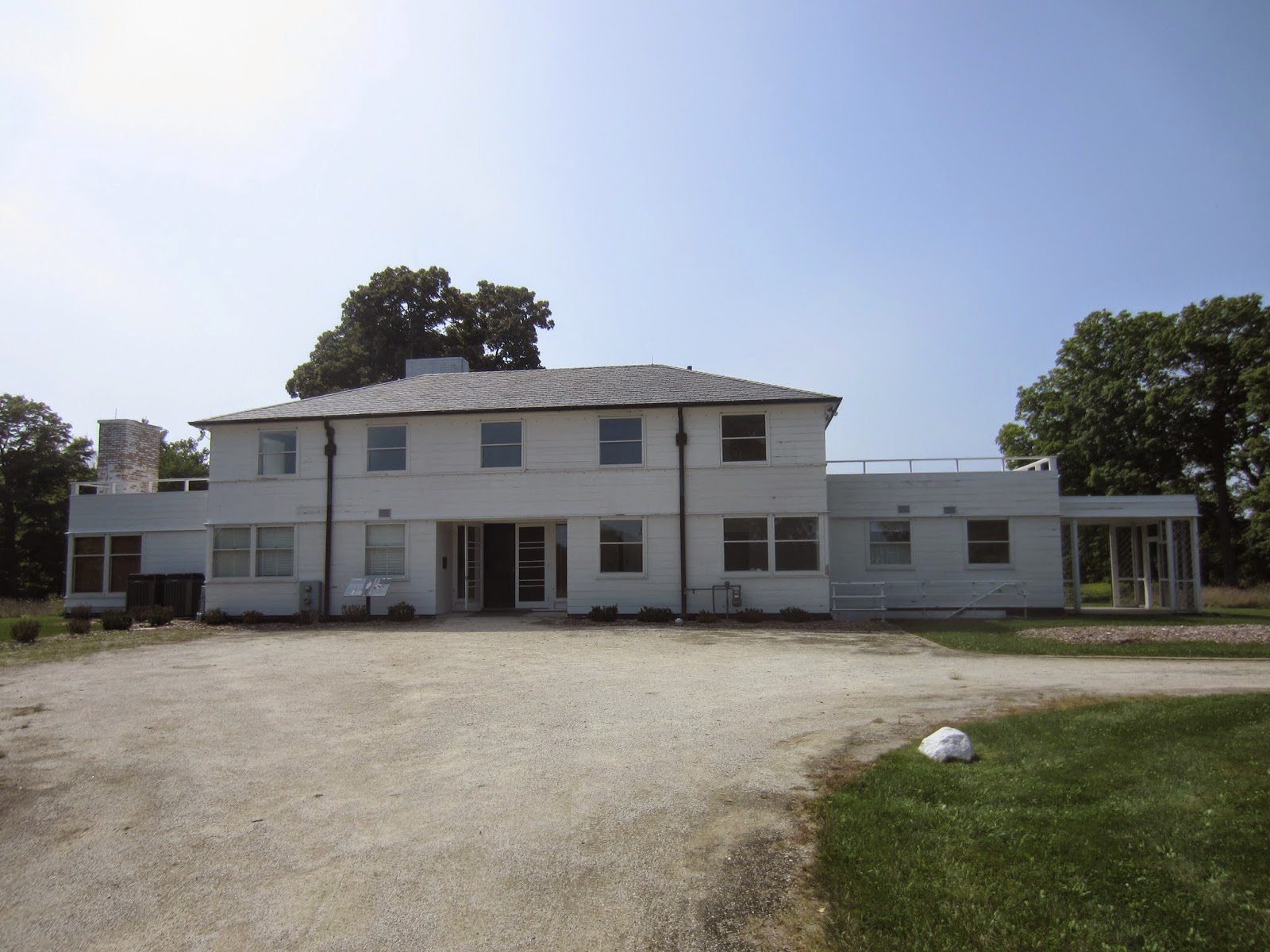A piece of the legacy of one of the most prominent political figures from a notable family with strong ties to Illinois is now a National Historic Landmark. The man was Adlai Stevenson II, and the landmark is his home in Mettawa, in Lake County, IL, which was designated a landmark last April, and the official plaque presentation ceremony was October 12.
I'm always on the look out for the kinds of sites that are not as well noted, but tell significant stories. And that's what piqued my interest when I saw a story on Chicago Tonight that Mr. Stevenson's home attained landmark status.
Looking for an opportunity to go on an outing somewhere, and seeing this as something of note, it was back on August 24 last that my Dad and I headed up from Oak Park to see it. It was a lovely drive up the Des Plaines River corridor, following Des Plaines River Road, into central Lake County, passing through suburbs such as Des Plaines, Wheeling, and Buffalo Grove. Upon reaching Townline Road/IL Route 60, we headed east, and then south into country land, where we finally reached the road to the home.
It is a sizable estate--Mr. Stevenson had 70 acres there. The Lake County Forest Preserve District now administers the property, which is 40 acres containing the house and the stables. Upon parking, we were directed into the stables where the tour began with some words about the property, and a brief video about Mr. Stevenson. (His maternal great-grandfather, Jesse Fell, was a friend of Abraham Lincoln. His grandfather, Adlai Stevenson I, was Vice President of the United States.)
Then, we went to the house.
Despite being in such a sizable piece of land, the house is on the small side and with a plain exterior look. As it turns out, while the Stevenson family was moving in, some rags spontaneously combusted in the basement because they came in contact with some chemicals, and set the house on fire. The walls were made of a material that was supposed to protect it from fires that could break out in the nearby natural areas, but helped the house function as an oven in the case of the spontaneous combustion. The present house on the site was built after that fire.
After a few words about the house outside by the front door, upon entering, we went straight to the study (see pictures below). It was made to look like it did when Mr. Stevenson used it, with many of the objects in it having been there during his lifetime.
Many famous dignitaries came to visit Mr. Stevenson II at this house, including Richard J. Daley, Eleanor Roosevelt, and John F. Kennedy, who sought Mr. Stevenson's enorsement for the Democratic nomination for president in 196. Mr. Stevenson wasn't willing to endorse him, because, it seems, Mr. Kennedy was too young and unready. The lack of an endorsement appears to be the reason why, upon entering office, President Kennedy appointed Mr. Stevenson to the role of Ambassador to the UN, rather than Secretary of State, for which he was more qualified.
We then looked around in the other rooms of the house, including the dining room, the servant areas, and the upstairs bedrooms, which were pretty much empty of any furnishings. The windows in the house provided great views out on the huge field to the west. Of note in the master bathroom upstairs were marks in the floor, which the tour guide pointed out were from Mrs. Stevenson's high heels. There was a deck (see second picture below) right off the master bedroom (see directly below), with great views of the huge lawn stretching from the house to the nearby woods along the Des Plaines River.
We finished up the tour back in the stables (see directly below).
Upon ending, we looked around at the exhibits, with panels featuring some of his quotes, which I felt had spoke eloquent ideas:
From reading these quotes, I could tell that Adlai Stevenson II was a man of principles, and used his capacity as a public servant to make them known as part of his efforts to make the world a better place, where people conduct themselves honorably, decently, and respectfully. I think that's why President Johnson said he would be remembered for his ideas rather than the positions he held (see the quote on the picture of this panel below):
Unlike the people in my grandparents' generation, I never experienced Adlai Stevenson II while he was in the prime of his public service career. So I was glad to have this opportunity to visit his home and learn more about this important figure. And it's good that this site has been preserved and now been given a significant recognition for its part in the narrative of United States history.
(And it was to my grandma right off I-94 whom we paid a very nice visit while on the way back home.)
P.S. If you weren't aware, this is the 100th post on this blog.















